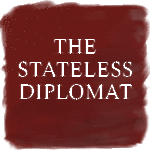
Historical Summary
Starting in the mid-19th century during the dissolution of the Ottoman Empire, one country after another gained its independence, starting with Greece in 1832. In 1878, the peace treaty signed at San Stefano secured independence for Serbia, Romania, and Montenegro; Bulgaria gained autonomy (independence would come thirty years later); Russia claimed important cities, ports and territories populated by Armenians. As Armenians inhabited eastern Anatolia since before the time of Christ, they saw this as their opportunity for self-determination. However, at the Treaty of Berlin of 1878, (orchestrated by Great Britain, which backed Turkey) the Armenian Question was disregarded, and only provided Article 61, a worthless gesture at guaranteeing Armenian security. This loss of interest by the European Powers to the plight of the Armenians gave license to future Turkish rulers, to deal with this population as they wished. The result was a succession of massacres by Sultan Hamid II, killing approximately 250,000 Armenians between 1894 and 1896. Ultimately, 1.5 million Armenians were exterminated starting in 1915, out of a total Armenian population of 2.5 million in the Ottoman Empire, in what is known as the Armenian Genocide.
“Like her ancestors Diana Agabeg Apcar was a child of the Diaspora. Both her forefathers and her husband’s were among those forcibly deported from the historic Julfa, Armenia on the banks of the Araxes River in 1605 and resettled in a neighborhood of Isfahan, the capital of Iran (then Persia) at the time, named New Julfa, in memory of their ancestral home.” (Written by Ara Ghazarians, Curator, Armenian Cultural Foundation, Arlington, MA).
Diana (birth-name Gaiana) Agabeg was born in Rangoon, Burma on October 17, 1859, the youngest of seven children. Her parents were second generation Armenians born in India; Zumruth was born in Rangoon and Johannes in Calcutta. Her father’s family had come from New Julfa and her mother’s from Shiraz, Iran. Diana’s formal education was a convent school in Calcutta; she was fluent in Armenian, English, French and Hindi.
In 1890, Diana Agabeg Apcar moved to Japan with her husband, and stayed there until her death in 1937. The couple married less than two years earlier, a few months before her 30th birthday. She resisted marrying, focusing her energy on writing, much to the disappointment of her family. Her first novel, Susan, written before her marriage, but published in Japan, is believed to be autobiographical. The heroine, Susan, struggles with a disappointed mother, who doesn’t see her daughter conforming to societal expectations.
For fifteen years, Diana’s new family required her full attention, as she gave birth to five children, two of whom died as young children, and struggled with her husband’s extravagant business ventures, which lead to two bankruptcies. In November 1906, her husband died suddenly, forcing her to take over the family business to support her children. Her son dropped-out of school, as she could not afford the tuition, but in time she not only created a successful business, but gained the respect of the local community, both Japanese and foreign, a unique accomplishment for a foreigner, and most especially a business-woman in Japan.
Something changed for Diana, after the massacre of approximately 30,000 Armenians in 1909, in Adana, Turkey. She began to focus her energy outward, calling attention to the plight of the Armenian people. She studied history and current affairs, and formulated a picture of the political powers of the time and their manipulations. She could not accept the amoral behavior of world leaders focused on self-interest. She rejected political indifference to the pain and suffering of humanity. And so she wrote: she wrote essays, letters, books, pleading for compassion and action to divert an impeding crisis.
With the start of the genocide, and lack of response from world leaders, Diana’s energy turned to rescuing and securing funds for the destitute. She was the American Red Cross coordinator in Japan, responsible for the Armenian refugees who found their way to Vladivostok, Siberia and Harbin, Manchuria. She solicited funds on their behalf and arranged their travel to Yokohama, where she housed them, found them jobs, and coordinated their travel documents and passage, primarily to the U.S. Hundreds of people passed through her care, staying with her in Japan for many months.
This extraordinary woman worked tirelessly for justice for the oppressed, both through her writings and humanitarian efforts. Diana Apcar was a very proper and deeply religious Victorian woman, committed to her faith and her church. She wrote letters and published nine political essays, dealing with the right of self-determination and evils of imperialism. She campaigned on behalf of the Armenian people, whom she saw as political pawns in a game of brinkmanship between super-powers. She personally supported hundreds of destitute refugees, from the crumbling Ottoman and Russian empires, after an arduous journey across Siberia to Japan; she housed, fed, and secured documentation for hundreds of destitute souls escaping genocide, starvation, and the Bolshevik revolution. She overcame societal taboos and pressures of the time to become a respected leader in a male-dominated world, as she challenged the motives and decisions of major political powers. The culmination of this career was her appointment as “Honorary Consul to Japan” from the Armenian foreign minister in 1920, a unique recognition of her accomplishments.
Diana Agabeg Apcar’s accomplishments are all but forgotten today. Photographs barely exist, as her home and everything in it was destroyed in the Great Kanto Earthquake of 1923. What did survive was subsequently destroyed in bombings during World War II. Our hope is that we can revive this inspiring life story, before it’s lost forever. Her books provide a valuable resource to understanding her perspective, and records of her efforts exist in correspondence between her and people like David Starr Jordan, President of Stanford University and head of the World Peace Foundation. Her story needs to be told: it is the story of salvation for hundreds of genocide survivors; it is her own story of overcoming adversity and trying to change the world.

